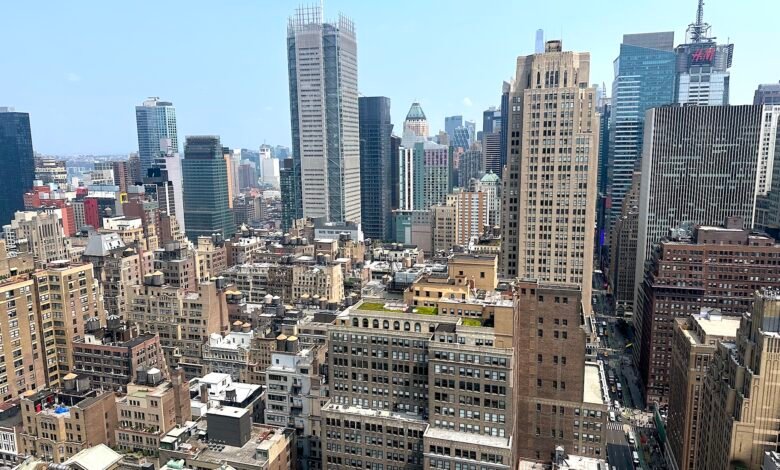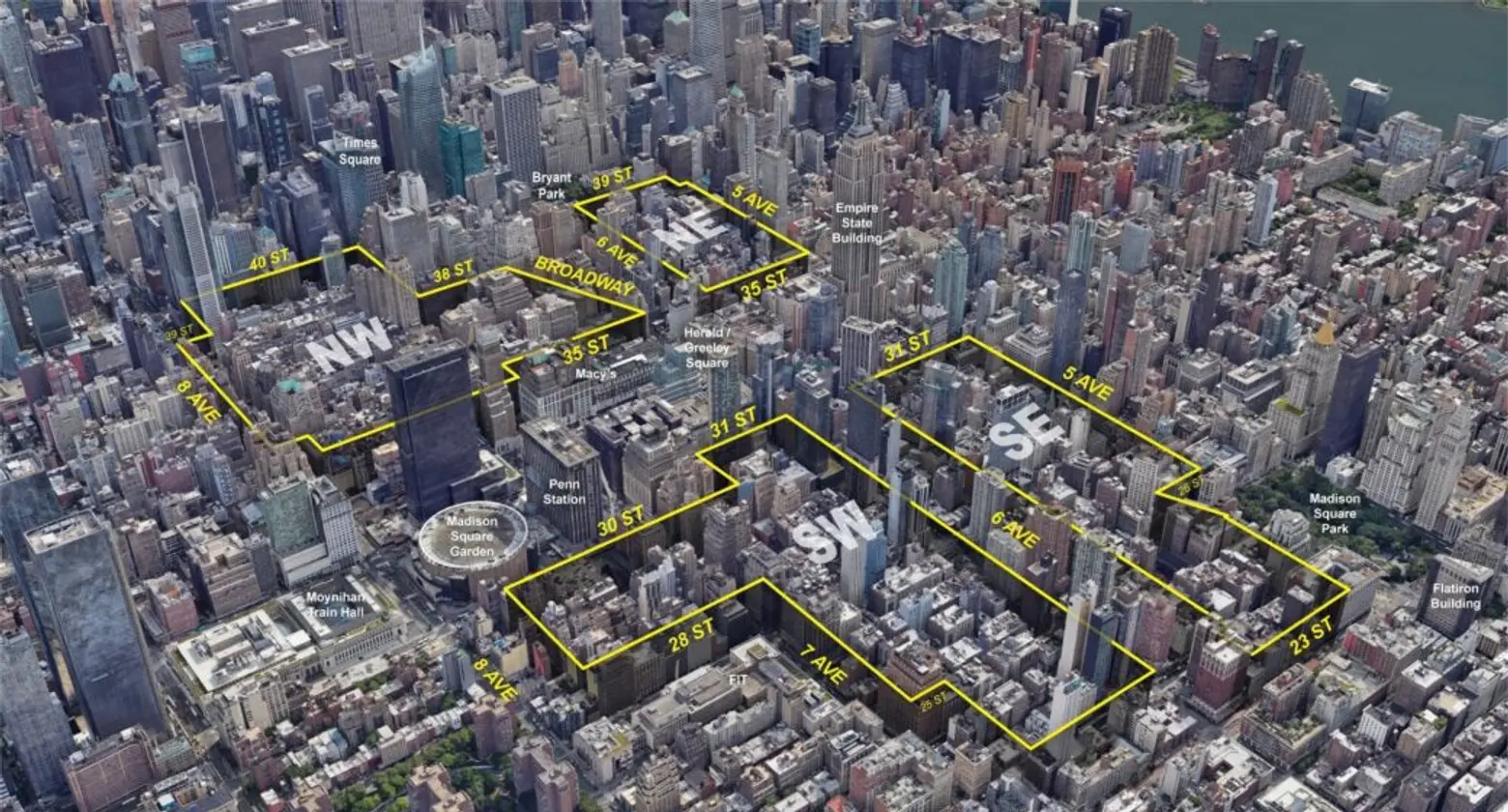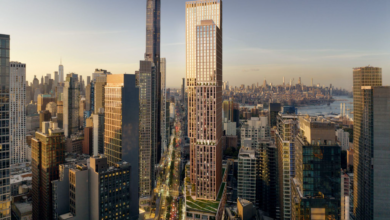Midtown South rezoning moves forward, 34th Street busway and protection for Garment District workers included


The Midtown South rezoning received key approval this week, with new community and infrastructure improvements included in the deal. The City Council Subcommittee on Zoning and Franchises on Wednesday voted to approve the Midtown South Mixed-Use (MSMX) plan, which updates zoning rules for 42 blocks of the neighborhood to allow for 9,535 new homes, including 2,842 permanently affordable apartments, in an area where housing development has been largely restricted. In addition to lowering the residential density allowed on certain blocks in the original plan, the City Council and City Hall agreed to $488 million in community infrastructure investments, including a busway on 34th Street and protection for Garment District workers.

First unveiled by Mayor Eric Adams in August 2023, the rezoning covers four quadrants of Midtown between 23rd and 40th Streets, and 5th and 8th Avenues—an area containing more than 7,000 businesses and 135,000 jobs, as 6sqft previously reported.
While it is a historic economic center of the city, the area has struggled to recover since the pandemic, with many of its office buildings sitting vacant and antiquated zoning rules restricting the development of new homes.
Led by Council Members Erik Bottcher and Keith Powers in partnership with the Adams administration, the rezoning takes advantage of new zoning tools permitted under the City of Yes plan, approved by the Council in December. After the state lifted the cap on floor area ratio (FAR), two new high-density, mixed-use zoning districts, R-11 and R-12, permit FARs of 15 and 18, allowing for larger developments alongside commercial and industrial businesses.

The lift on the FAR cap allowed the city to increase its projected housing totals from 4,000 to nearly 10,000.
MSMX also includes Mandatory Inclusionary Housing (MIH) in the neighborhood for the first time, requiring permanently income-restricted housing, and updates outdated zoning rules to allow office-to-residential conversions, expanding eligibility to buildings constructed before 1990—up from previous cutoffs of 1961 or 1977, depending on the area.
This would free up 136 million square feet of office space across the city to become new homes. Roughly 781 of the new homes in the MSMX plan will be from office-to-residential conversions, according to The Real Deal.
Many consider office-to-residential conversions a key tool for addressing the city’s housing shortage. A July report from City Comptroller Brad Lander found that 44 office conversions initiated after the pandemic could transform 15.2 million square feet of office space into as many as 17,400 homes over the coming years.
The plan had called for 9,676 apartments, with 2,890 affordable, but the totals were slightly lowered after the Council reduced the residential density allowed in a four-block area between 23rd and 27th Streets, bringing the floor area ratio from 18 to 15, according to The Real Deal.

“We’re tackling New York’s housing crisis head-on by unlocking over 9,500 new homes in one of the most transit-rich, high-opportunity areas of the city — helping to bring down rents not just in Midtown, but citywide,” Bottcher said.
“At the same time, we’re protecting good-paying jobs, preserving the heart of our fashion industry, and reimagining Midtown South as a place where more families can live, thrive, and build lasting community.”
Through negotiations, the Council secured more than $120 million in economic development resources to protect and support the Garment District’s historic fashion industry.
These include Midtown Made, a campaign led by the Department of Housing Preservation and Development to connect businesses with expanded resources; a Local Production Fund to encourage designers to work with local manufacturers; a $50 million investment in the Greenlight Innovation Fund to help nonprofits acquire and develop below-market, permanent space; and the reopening of the Manhattan Commercial Revitalization program.
In addition, the Council secured over $340 million for street and public realm improvements, upgrades to parks and playgrounds, enhancements to local subway stations and bus routes, and funding for hospitals and emergency medical services.
Included in this funding is the completion of the mayor’s “Broadway Vision” initiative, which aims to transform 21 blocks of the iconic street into a pedestrian-centric corridor. The plan features two new car-free blocks on Broadway—between 22nd and 23rd Streets and between 24th and 25th Streets—making Broadway completely car-free from 22nd to 25th Streets.
Additionally, as part of the agreement, work will resume on the 34th Street busway, which the Adams administration halted in July, as Streetsblog reported. Modeled after the 14th Street busway, the plan adds a car-free dedicated bus lane between Third and Ninth Avenues to boost speed for more than two dozen bus routes.
New playground equipment will be installed at P.S. 11, while P.S. 33 and P.S. 430 will receive an upgraded auditorium and technology improvements. Jacqueline Kennedy Onassis High School is set to receive a modernized science lab, and the High School of Fashion Industries will get a new fabric, textiles, and fibers arts lab.
Speaker Adrienne Adams praised the approval, calling the MSMX plan a major step toward addressing the city’s housing crisis.
“To confront the citywide housing and affordability crisis, our city must build more homes and invest in housing solutions that allow generations of New Yorkers to remain in this city,” Speaker Adams said.
“The Council is proud to advance the MSMX plan that will deliver more new homes than any residential rezoning in 20 years, while investing to preserve and support our city’s Garment District industries and invest in the needs of the surrounding communities.”
The rezoning now heads to the City Council on August 14 for a final vote.
RELATED:
Source link

